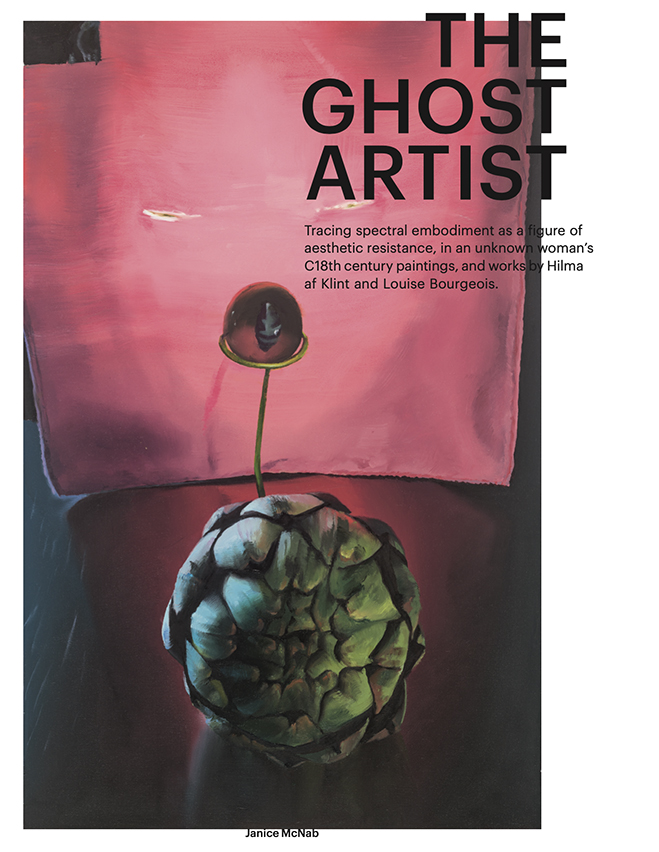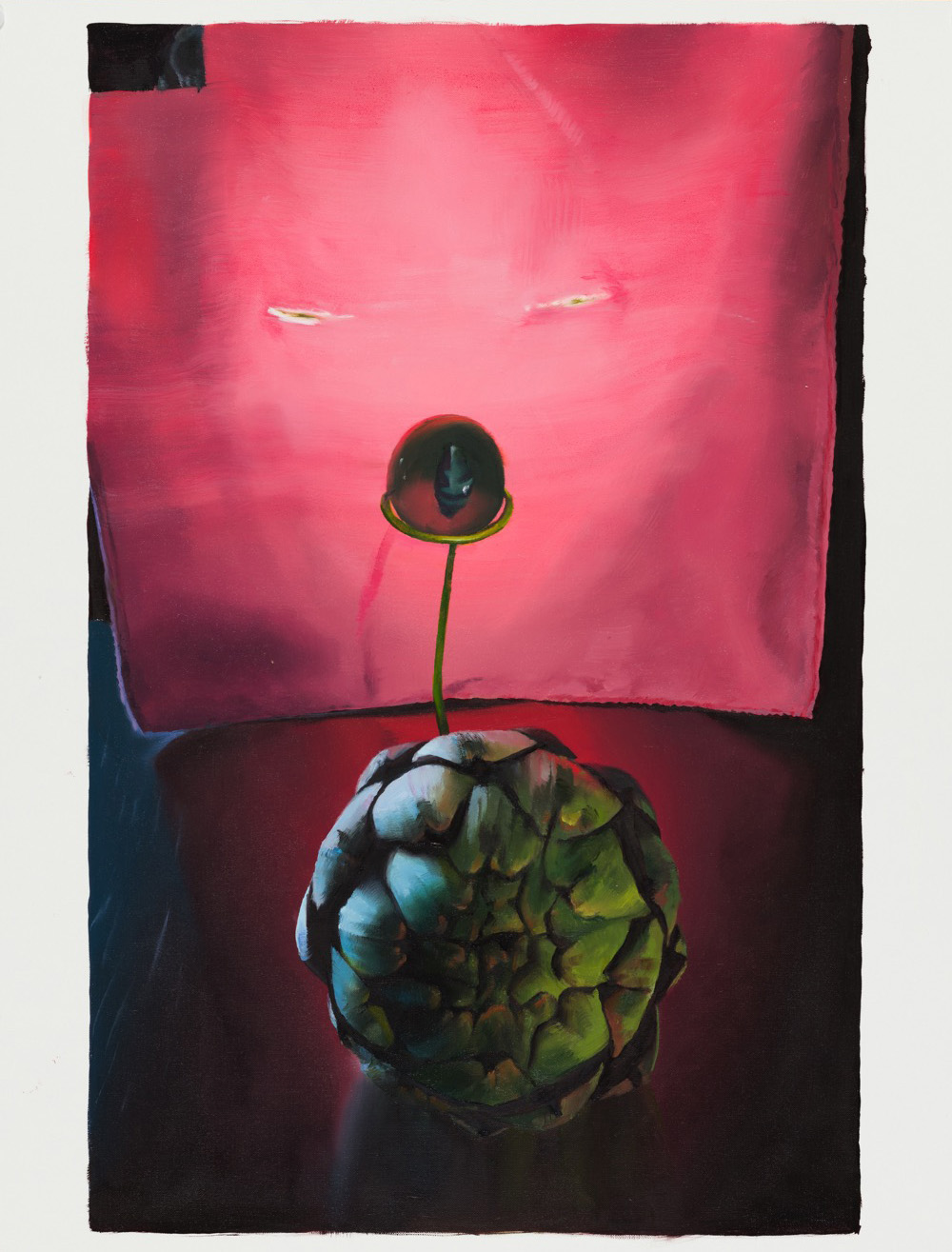The Ghost Artist is the outcome of my doctoral research at the University of Amsterdam School for Cultural Analysis. The introduction and conclusion can be downloaded here.

Summary
The Ghost Artist explores an alternative history of women’s self-portraiture in which a spectral idea of the body replaces a naturalistic one. This approach to self-visualisation is traced in artworks spanning the last three centuries, revealing a repeating act of resistance to idealising body imagery.
The Ghost Artist analyses key works by both Louise Bourgeois (1911–2010) and Hilma af Klint (1862–1944) in relation to the works of Anon., an C18th artist previously unrecognised as being a woman. It describes how these works portray the experience of embodiment as a relationship with surrounding space and the objects to be found there. In each case, mesmeric attention is paid to undervalued household surfaces that build across multiple parts to become haunting images of human presence visible only as fragment and suggestion. This way of seeing, both focussed and scattered, creates spectral body-forms that only coalesce on the edge of vision, and resist culturally constructed ideals of a woman’s body as a static unity to be looked at.
The Ghost Artist is the story of an artist looking at art history, and my own paintings of ghosted bodies flit through it in a series of undiscussed inserts. These ‘supermarket spectralities’ are in turn haunted by Jess, a middle-aged academic. Jess lives in the margins of the main story and is a woman riven by ghosts. They leak from her unconscious as she looks for magical answers to the floods of the menopause. Studying the writing of the main text, she comes to realise that as time moves unerringly forward, she also travels back, becoming both the stunned alchemist and her own hermetic flask.
The story of Jess, the inserted paintings, and the historical analysis combine in a re-reading of material remains that are still not fully included in our stories of women picturing their worlds. It is a tale of women turning an objectifying image principle inside-out and returning an imagination of the sensing inner side of all our skins. It has been created in the belief that pictures and words matter, as we all need to see our inner ghosts being valued, out there in the world.
